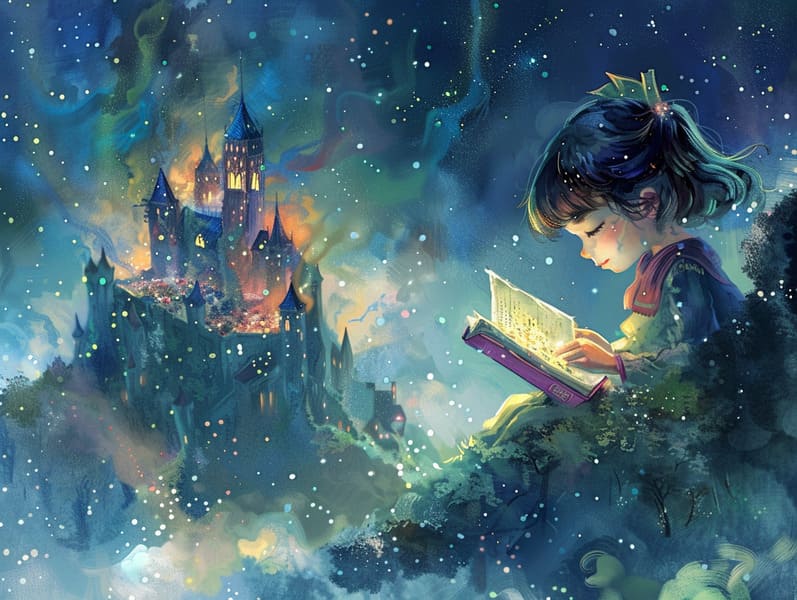
Ancient fairy tales have enduring presence. These stories have been recounted from one generation to the next far before they were ever documented. They developed from a variety of societies, including Western traditions. They were initially narrated among grown-ups, often carrying themes and messages concerning the societal norms and beliefs of the time.
The famous Grimm duo, Jacob and Wilhelm (the Grimm brothers), were among the first to compile many of these beloved narratives. Their collection, "Grimm's Fables," included classics like "The True Bride," "The Bread Crumb Trail," and "Little Snow White," which have since become staples in the world of traditional fairy tales. Similarly, H. C. Andersen's fantastical fairy tales, such as "The Mermaid's Tale," and "The Story of the Ugly Duckling," have gained the love worldwide, solidifying their place in the pantheon of timeless fairy tales.
Despite their historical roots, these tales remain as applicable as ever, especially as bedtime stories for kids. These enchanting tales are now available in different formats, including artistically illustrated books, whimsical animations, and free fairy tales online.
Their enduring popularity can be ascribed to several captivating elements:
Crucial Morals: Ancient fairy tales often convey important moral lessons. Fairy tales like "The Shepherd Boy and the Wolf" teach the importance of sincerity, while "The Tale of the Tortoise and the Hare" demonstrate the benefits of perseverance and modesty. These narratives offer little ones clear distinctions between truth and falsehood, molding their moral compass in a gentle yet important way.
Empathy and Awareness: Ancient fairy tales frequently showcase personalities facing problems and hurdles, provoking children to sympathize with their struggles and root for their triumphs. For instance, "Beauty's Beast" reveals the benefit of looking past the exterior to realize the inner spirit of a person, strengthening kindness and recognition.
Cultural Knowledge: Many traditional fairy tales are saturated in the cultural contexts from which they bloomed. Learning from these tales can provide informative snapshots into different ways of life, nurturing a sense of global appreciation and awareness.
Imagination and Innovation: The fantastical elements in traditional fairy tales—enchanted lands—revitalize children’s fantasies. These tales carry readers to imaginary realms, stimulating creative ideas and a sense of delight that endures a lifetime.
Classic fairy tales are not only captivating but also instructive. They work as delightful tools in promoting various brain and heart skills in the young. When timeless fairy tales are spoken, they promote language development by introducing new phrases and detailed sentence structures. This practice also develops hearing perception and attentiveness, as the young focus on every detail, enthusiastic to see what happens next.
Furthermore, exploring the themes and characters of ancient fairy tales can strengthen logical thinking and thinking skills. The young learn to notice patterns, predict happenings, and catch on to cause and effect. These debates also aid young ones articulate their thoughts and feelings, nurturing their emotional intelligence.
In today’s technological era, the availability of web-based fairy tales has made these tales more attainable than ever. Internet sites and programs offer comprehensive collections of timeless fairy tales that can be experienced or listened through anytime, anywhere. Fairy tales told out loud are particularly well-received, making available an fascinating method for children to engage with these charming tales. Narrated books and narrated videos guide characters and settings to life, often accompanied by whimsical audio effects and songs that intensify the storytelling experience.
The persistent attraction of ancient fairy tales lies in their ability to alter to present days while preserving their main lessons. Contemporary retellings of these narratives often show more different protagonists and modern settings, making them relatable to today’s audience. However, the main ideas of fortitude, humanity, and justice remain unchanged, continuing to impact audiences of all ages.
Old fairy tales also offer a sense of protection and understanding. They put out a orderly narrative with a recognizable beginning, middle, and end, often concluding with the ending of conflicts and the triumph of virtue over wickedness. This dependability can be heartening for kids, making known a sense of dependability in an unpredictable world.
Ancient fairy tales continue to enchant and train new generations, maintaining their beauty and impact in modern society. As children's bedtime stories, they showcase a perfect blend of fascination and comprehension, sustaining moral values, empathy, and creativity. The existence of digital fairy tales and the likability of fairy tales spoken certify that these ancient fairy tales remain obtainable to new generations.
By conserving and releasing these fairy tales, we continue to value the rich tapestry of folklore and cultural heritage. Whether you are accessing a beautifully illustrated book, browsing a web collection, or playing an spoken story, the grandeur of timeless fairy tales is always within reach. These stories convey of the ageless essence click here of storytelling and its ability to tie us across time and space.
Whether you are enjoying a richly illustrated book, viewing a digital library, or listening on an read-aloud story, the magic of popular fairy tales is always within reach.
These narratives illustrate of the endless magic of narratives and its ability to link us across eras and regions, forming a connection that captivates and teaches alike.